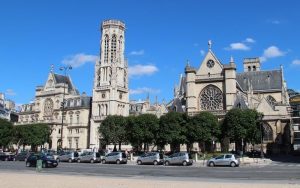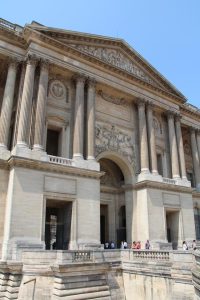 Around the Oratoire du Louvre © Fondation Bersier (Thibault Godin 2016)
Around the Oratoire du Louvre © Fondation Bersier (Thibault Godin 2016)
 Around the Oratoire du Louvre © Fondation Bersier (Thibault Godin 2016)
Around the Oratoire du Louvre © Fondation Bersier (Thibault Godin 2016)
In the 16th century only half of the Cour existed of the South and West wings. The sculptures adorning both sides of the façade represent children and animals’ heads, by the Protestant sculptor Jean Goujon – who was born around 1510 and died in 1567 – are among the most beautiful remains of the French Renaissance.
The North and South wings of the courtyard were built to Lemercier and Le Vau’s designs in the 17th century. The east side of the courtyard was closed by Perrault’s colonnade built between 1667 and 1678.
On the rue de l’Amiral de Coligny, opposite de colonnade of the Louvre, stands Saint-Germain l’Auxerrois church built between the 14th and 16th centuries. It used to be the church of the Louvre and parish of the French kings. The porch and the nave are in the Flamboyant Gothic style. The bells in the steeple rang matins and gave the signal for the Saint Bartholomew Massacre in the night of 23-24 August 1572.
The rather small Romanesque steeple is not easy to see. Its base inside the church is in the corner of the right transept with the choir. It should not be mistaken with the 38-metre-high belfry on the town-hall of the 1st arrondissement, built in 1858 in the Renaissance style and located between the church and the town-hall.
On 22 August 1572 the attack on Coligny, shot in the arm with a musket, took place in the rue des Fossés Saint-Germain, presently rue Perrault, along the town-hall.